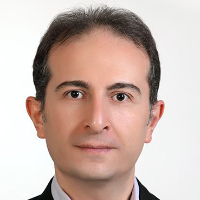Mathematical simulation of heat and mass transfer in convectional drying of carrot, pretreated by ultrasound and microwave
Drying foods, fruits and vegetables is a suitable method to reduce post-harvest losses of the crops. Drying is considered as a simultaneous heat and mass transfer process. Various physical, chemical and nutritional changes occur during drying of foods and are affected by a number of internal and external heat and mass transfer parameters. External parameters may include temperature, velocity and relative humidity of the drying medium (air), while internal parameters may include density, permeability, porosity, sorptiondesorption characteristics and thermo physical properties of the material being dried. In this regard, understanding the heat and mass transfer in the product will help to improve drying process parameters and hence the quality. The mathematical model that reflects the drying process physics is a complex model. Particularly because of the process of convection drying of materials with high initial water content, boundary conditions should be assumed in the model describing heat and mass transfer. Ruiz-López and García-Alvarado (2007) proposed a model that provides a simple mathematical description for food drying kinetics and considered both shrinkage and a moisture dependent diffusivity. Food temperature was considered constant. The objectives of this work are: (a) to develop a mathematical model for simulating simultaneous moisture transport and heat transfer of pretreated carrot sample; (b) to study numerically the effect of the air drying conditions and pretreated on the drying of carrot and (c) to calculate the density and effective diffusion coefficients of carrot under various conditions.
In order to compare experimental and numerical analysis results, a laboratory scale convection dryer was used for experimental work. Cylindrical samples before entering the dryer were pretreated with ultrasound at frequency of 28 kHz for 10 min and microwave at 1 W g-1 power for 15 min. Experimental results of moisture evolution and volume changes during drying were used to estimate moisture diffusivity and product density. Transient three-dimensional simulation of heat and mass transfer was performed with a set of initial and boundary conditions using the finite element method. The effect of the aforementioned pretreatments was applied in terms of the modified effective moisture diffusion coefficient in the heat and mass transfer equations.
The effect of the ultrasonic pretreatment on drying was mainly observed during the air-drying stage where a significant increase in water effective diffusivity was found. Ultrasonic waves can cause a rapid series of alternative compressions and expansions, in a similar way to a sponge when it is squeezed and released repeatedly (sponge effect). Microwave pretreatment reduced the initial moisture content and slightly increased the coefficient. The values of moisture diffusivity found in this study was in the order of - m2 s-1 which is typical value for drying of agricultural product (Zielinska and Markowski, 2010). Comparison of the experimental and predicted moisture and temperature profiles showed that the model could predict the heat and mass transfer phenomena with good accuracy. In this section, some simulation results are presented. The simulated moisture contents in the center and on the surface during drying showed that moisture content on the surface decreases rapidly for a short time due to the evaporation during precooling. Then it starts to increase because of the moisture diffusion from the layers under the surface towards. The temperature inside the object increases with an increase in the drying time since the temperature of the drying air is higher than that of the object. As a result of these transient and non-uniform temperature distributions, the moisture diffusivity which depends on the moisture will vary and in turn the rate of the moisture diffusion inside the object. As seen in the figure, the distributions appear not to be symmetrical. Higher temperature and moisture gradients are obtained at the side wall due to the upstream of the drying air.
A theoretical analysis of pretreated and non-pretreated carrot drying process was presented. The main innovation introduced by this study was represented by the model formulation. This, in fact, simulated the simultaneous three dimensional heat and moisture transfer accounting for the variation of both air and food physical properties as functions of local values of temperature and moisture content. Moisture diffusivities of pretreated and non-pretreated carrot have been determined experimentally and moisture diffusivities of pretreated and non-pretreated carrot were found to increase with using of ultrasound pretreated. The effect of the aforementioned pretreatments was applied in terms of the modified effective moisture diffusion coefficient in the heat and mass transfer equations. Comparison of the experimental and predicted moisture and temperature profiles showed that the model could predict the heat and mass transfer phenomena with good accuracy. The model can be used as a proper tool in the design optimization and the optimal determination of the dryer performance parameters.
- حق عضویت دریافتی صرف حمایت از نشریات عضو و نگهداری، تکمیل و توسعه مگیران میشود.
- پرداخت حق اشتراک و دانلود مقالات اجازه بازنشر آن در سایر رسانههای چاپی و دیجیتال را به کاربر نمیدهد.



